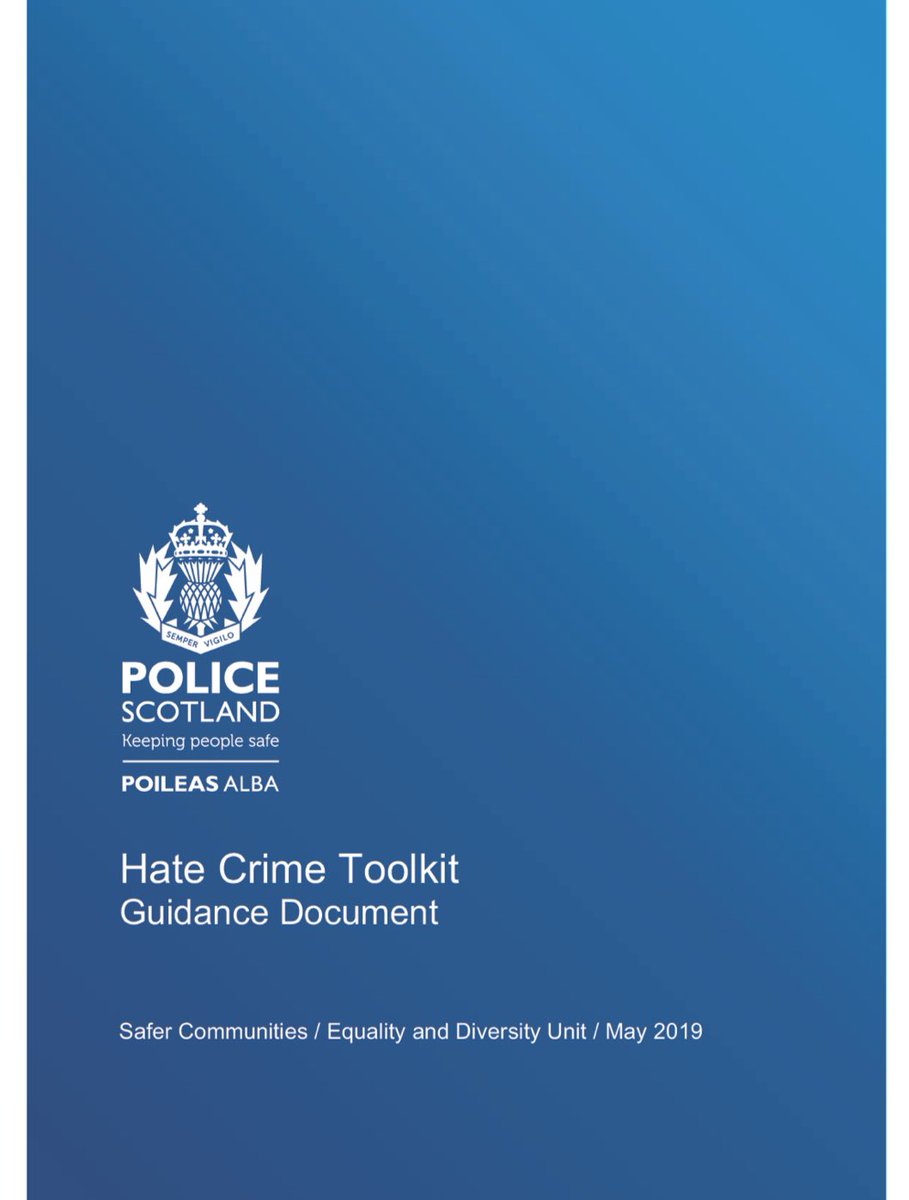Hate Incidents: how thousands of people are ending up on Scottish police databases for non-crimes.
A week away from the introduction of the Hate Crime Act, this is chilling. 🧵
#HateCrime
A week away from the introduction of the Hate Crime Act, this is chilling. 🧵
#HateCrime
The new law extends the ways people can end up on a list, but Police Scotland have been recording accusations for several years.
This is their handbook:
scotland.police.uk/spa-media/1igm…

This is their handbook:
scotland.police.uk/spa-media/1igm…

So what happens when someone contacts police to report something they’ve seen that they don’t like?
This is the most recent police guidance:
scotland.police.uk/what-s-happeni…

This is the most recent police guidance:
scotland.police.uk/what-s-happeni…

The report will be investigated. The complainant will get victim support. And even if it’s not a crime, it will be recorded as a hate incident. Because the perception of hate is what counts here. Back to the toolkit: 

There’s a lot to unpick. Let’s leave the actual crimes to one side and deal with what happens if police conclude there’s no crime. It will still be recorded as a hate incident if the person reporting it perceives it as one. Police are told not to challenge this. 

What happens next? You go on a list. First it’s recoded on STORM, the system used by Police Scotland to record incidents. Then it goes on the iVPD - the interim Vulnerable Persons Database - where they record hate crime
gov.scot/publications/d…

gov.scot/publications/d…

The “perpetrator” is recorded. On top of the statement here, we know this too from the Murdo Fraser case today and the fact that hate incidents recorded against an individual can be mentioned in an enhanced disclosure. Here’s the full flow: 

There’s no requirement to have intended to offend. The complainant doesn’t even need to have experienced the perceived offence themself. 

And that’s how you end up on a list. There appears to be no published way of contesting it. No defence. No way to remove the mark against your name. And that’s before the new law extends the scope for complaints to anything published on the internet that can be viewed in Scotland 

• • •
Missing some Tweet in this thread? You can try to
force a refresh




